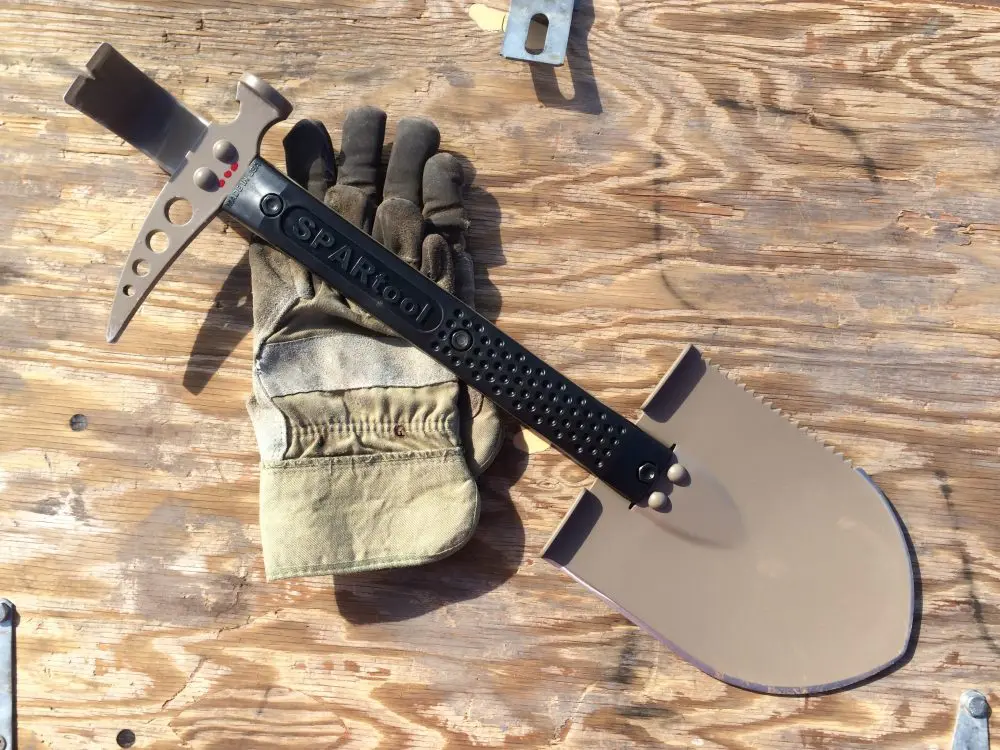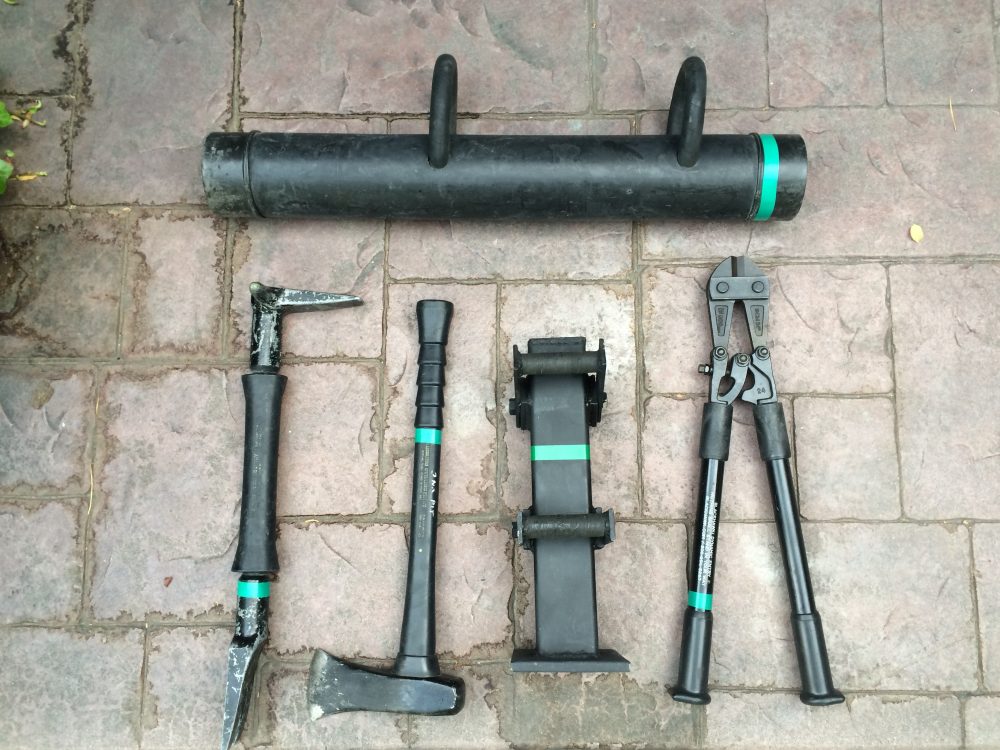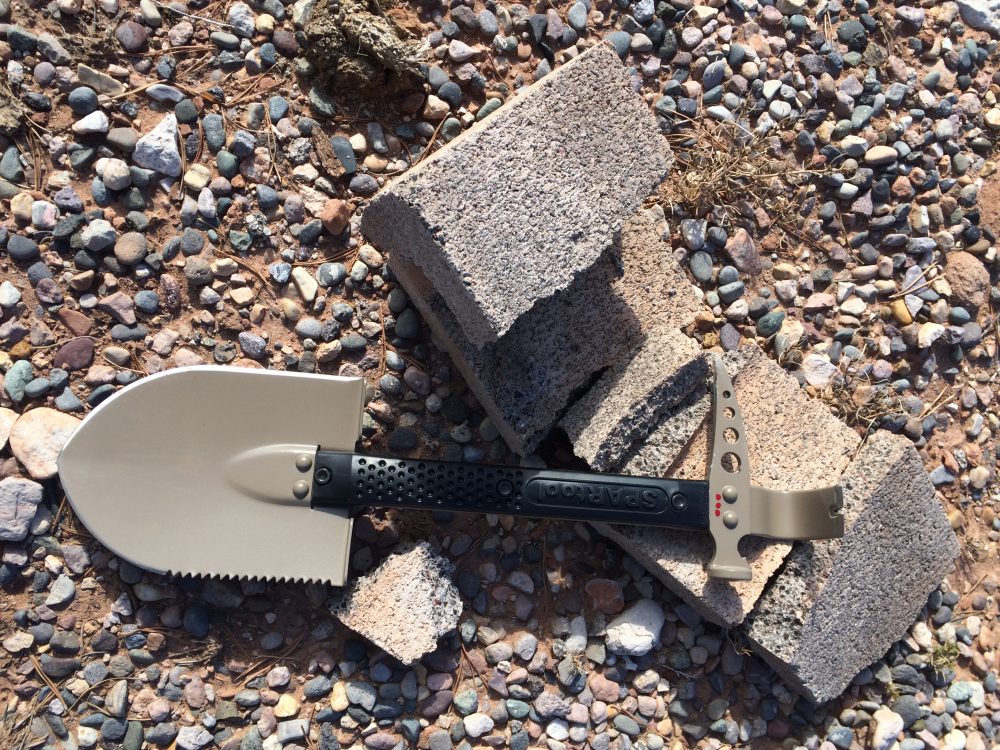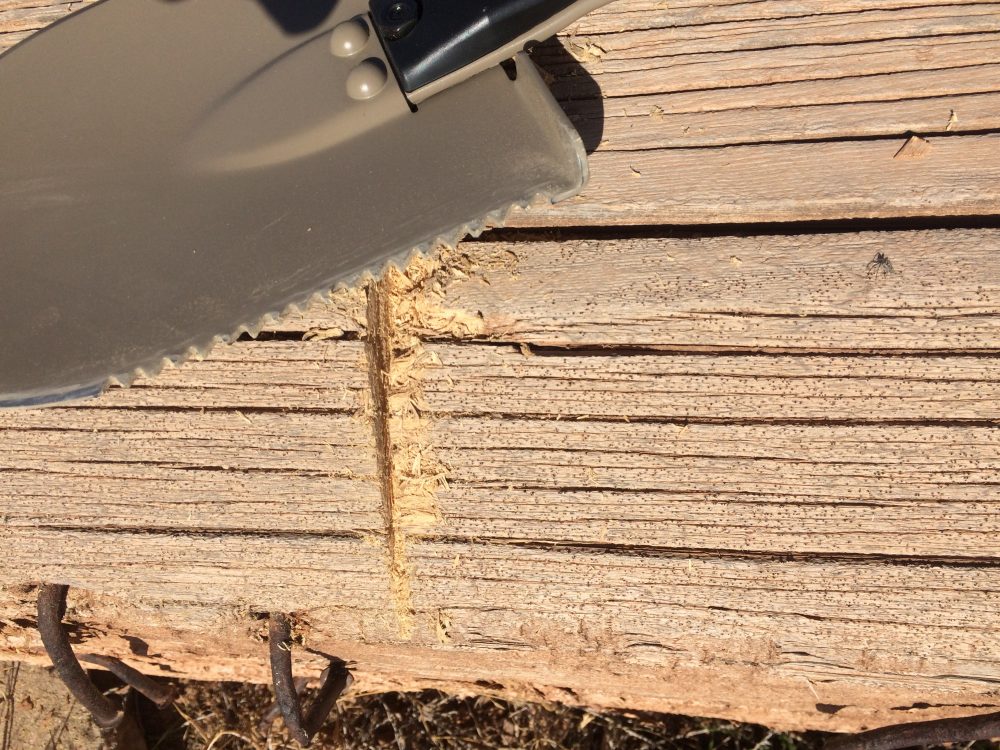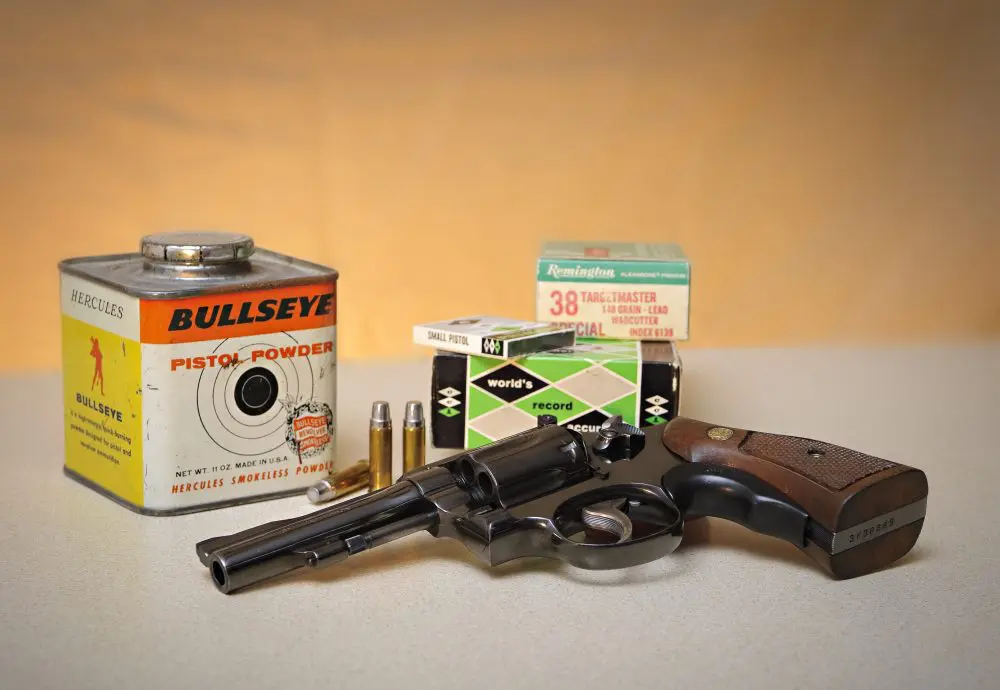Some all-in-one tools and devices are awesome, and some aren’t worth the cheap pot metal many of them are made from. What tools can you combine and still get functionality and efficiency from, and what tools just do not belong together?
Good question, and many of us have shelves full of cool-tool ideas that just didn’t work, were poorly designed, or were manufactured using inferior materials with only profit in mind.
Stewart Yeoh, president and designer of the SPARtool, has been there too. He told me, “I was updating my bug-out bag two years ago and wanted a solid camp shovel I could dig and chop with. I bought numerous options but was generally unimpressed with their durability and functionality. It seemed like no one who designed these things really understood how tools worked, or how much abuse anything that goes outdoors ends up taking. As an engineer and a guy who has used tools my whole life, I started to design my own product, with three goals in mind: it had to be functional, lightweight, and indestructible.”
Purpose-built tools are great but take up a lot of space and can be heavy to carry.
Table of Contents
PURPOSE-BUILT TOOLS
Purpose-built or task-specific tools are just that: designed for a specific task and purpose. They usually work exceptionally well for that specific task, and marginally well, poorly or are downright dangerous when used outside of the design scope.
Think of adjustable wrenches as hammers, knives as screwdrivers, and shovels as pry bars. It might work and get you by, or you may end up with a broken tool, metal fragments in your eye, or an extra hole in your skin. Generally, it’s best not to use them outside of their design/build parameters.
At this end of the spectrum, it’s easy to have so many purpose-built tools that you’re overwhelmed or weighed down when going and doing.
SPARtool: 1, cinderblock: 0.
MULTI-TOOL TRADE-OFFS
When you ask one device to do many jobs, plan on performance compromise. This is usually true with all kinds of mechanical devices. Even if they are awesome at their primary jobs, they may be a big disadvantage when used in the “multi-tool” role.
A sniper rifle is widely considered a poor entry weapon. A hot-rod may have lots of horsepower but suck at plowing a field. A breaching ram might be the wrong choice for driving in a finishing nail.
Where can you make compromises and still have a great multi-purpose tool?
SPARtool saw blade has an aggressive bite.
USING SCIENCE
Yeoh stated that he and his team did not include any tools in the design and manufacture of the SPARtool if they would not perform to 90% of what a similar-sized task-specific tool would. They used science to put this thing together.
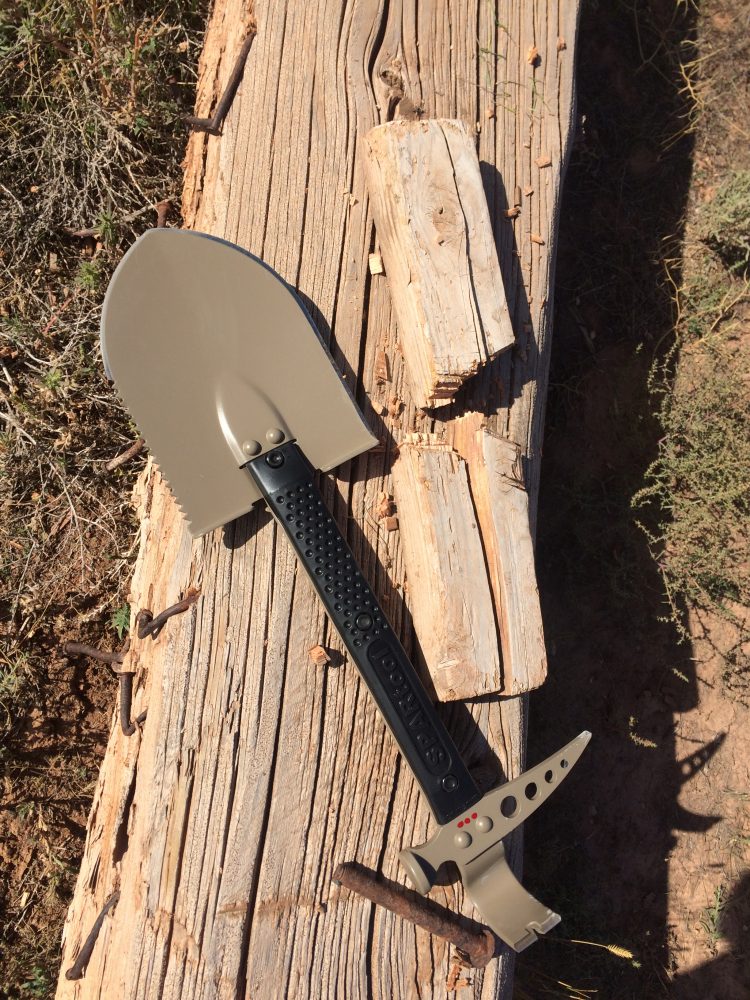
Yeoh said, “The tool has been carefully designed so that every function serves its purpose and does the job comparably to a single-function instrument. The shovel and blade edge are aligned parallel with the handle to make straight cuts, and the tool is perfectly balanced around its midpoint. The saw has a progressive rake angle and wide offset on the leading teeth to make cuts easier to start, and the 1075 carbon steel blade has been tempered to 48 RC for a good balance of flexibility and hardness.”
He also pointed out that some of the included tools augment other tools. For instance, the pry bar end, when grasped with the cover on, can give additional leverage to the shovel. Additionally, if you’re right-handed and using the axe-blade part of the shovel, all other sharp points are directed away from your body.
TESTING THE 90% THEORY
Does it work? Is this conglomeration of tools worth packing? I took the SPARtool with me for a weekend in the desert and banged, busted, hacked, and dug.
The Root Test: Many prickly tumbleweeds are in this part of the country. I wanted to see how the shovel blade tip would clear these weeds, some of which have ½-inch diameter roots. The SPARtool shovel cut through these like the proverbial hot knife through butter. I was surprised how sharp and effective the tool was for this task.
Pick Axe Test: A pile of cinderblocks was my next target. The pick tool was begging to show off its stuff. Short work here: The average cinderblock took three strikes from the pick to defeat. Check that box!
Axe Test: The last four to five inches of the right side of the shovel blade are sharpened and designed to use as a chopping tool/axe. My test involved a weathered 2×4. The blade proved to be very effective. At 12 strikes, I was halfway through, and at 26, completely through. Elapsed time was less than a minute.
Saw Test: Initially, I thought the saw blade would be relatively useless. I believed the teeth were short and not aggressive enough. I was wrong. The saw actually bit into wood well, and the short strokes were more effective than I expected. This is functional beyond its appearance. I also found the pry bar to be a great spot to grasp when sawing. It gave more leverage to the saw’s bite.
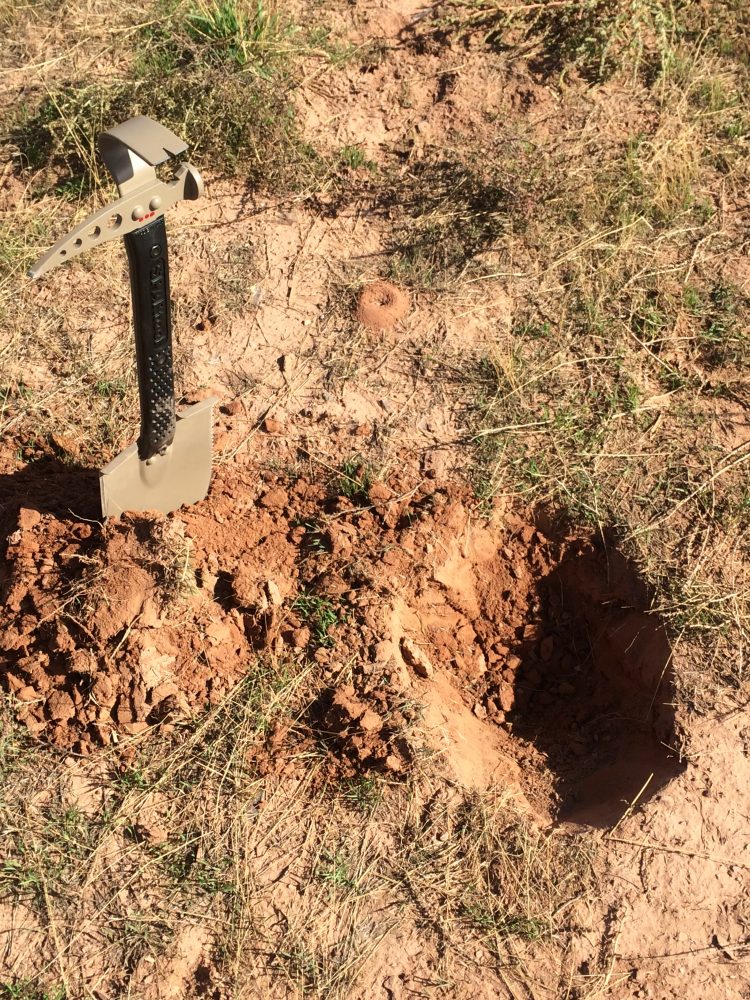
Shovel Test: The shovel blade is sharp and digs well. As mentioned earlier, the pry bar head works well to add leverage to the shovel when digging out rocks and roots. Even though the soil I tested this on was baked desert dirt, the shovel performed admirably.
Pry Bar/Wrecking Bar Test: I like to test these on car doors and windows when possible. But the only nearby vehicles had owners who would not have appreciated my altruistic tool test on their primary mode of transportation. So I settled for tearing apart an 8×8 square log. Next was prying up old ten-penny nails and some padlock hasps. The pry bar on the SPARtool handled these tasks just fine!
Bottle Opener Test: This is the one function I did not test. My preferred elixir-of-life beverage is usually in a can, but I have no doubt this bottle opener performs as advertised. And like Stewart said, “If you’re thirsty enough, the whole tool is a bottle opener!”
After these tests, the SPARtool was functionally none the worse for wear. The FDE finish of the tool has scratches and scrapes, but I could find no noticeable dulling of the pick axe, axe, or saw. The handle and grip remain tight and solid, and I have a newfound respect for the SPARtool.
RECOMMENDATIONS
My wish list for the SPARtool can likely be easily addressed.
First, I’d like to see more robust protectors for the sharp points of the tool. The ones provided worked fine during my tests, and if you are using standard protective gear (highly recommended with any tool) of gloves and eye-pro, you should have no worries. But I want to be able to grab the tool anywhere I need for leverage while performing a task without worrying about injury.
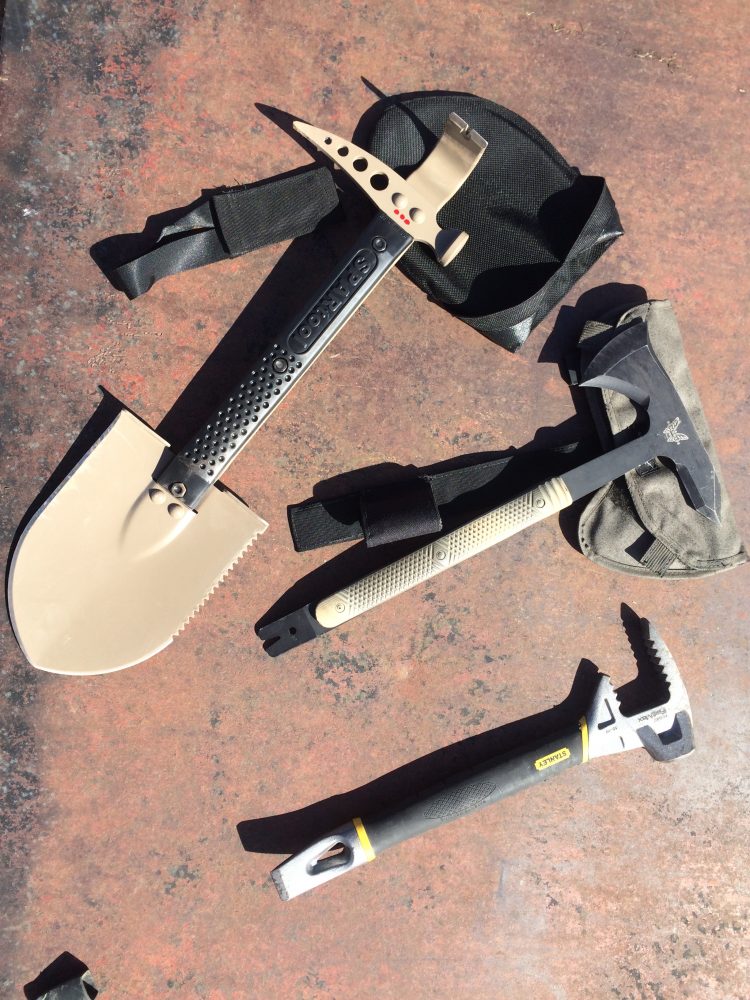
Second, I’d like a multi-purpose (see how that works?) Kydex sheath/holder for the SPARtool. Ideally it would be MOLLE compatible for a rucksack, to strap it onto the rollbar of my side-by-side or bolt the holder to the top of a toolbox.
While it must be tempting to outsource components and manufacturing processes, we all get upset when we hear of jobs going to other countries. SPARtool and their team have taken the high road and opted for local, in-state business to help them in the manufacturing process. Everything about the SPARtool is Utah-based and manufactured. In my opinion, you have to appreciate a company that puts principle over profit.
DOES IT BELONG?
The bottom line is, does the SPARtool belong in your gear locker, strapped in your vehicle or ATV, or rigged to your loadout ruck?
Yeah, I think so. While I wouldn’t pick the SPARtool if I knew my job was to split a cord of firewood, frame a house, or breach a solid-core door, I would pick the SPARtool if I didn’t know what I’d run into and wanted a tool that would do many things reasonably well.
At $150, I believe it’s a great value, and coming in a variety of finishes, you can’t go wrong.
Ken Matthews is a former SWAT team member with a Utah police department, fulfilling collateral responsibilities as a sniper and team medic depending on the mission. He has been an underground miner, EMT and Ambulance Commander, and a Flight Nurse and Air-Medical Program Director with over 1000 patient missions.
SOURCE
SPARTOOL, LLC
www.spartool.com
